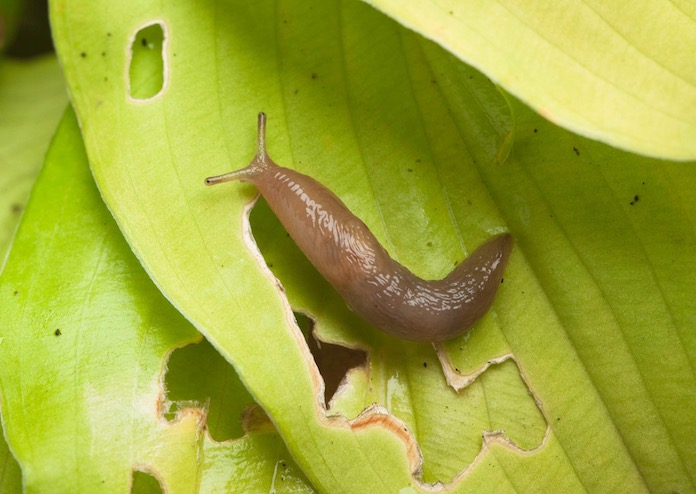According to the Hawaii Department of Health, an outbreak of rat lungworm cases has been occurring on the Big Island and Maui in that state. The rat lungworm parasite Angiostrongylus cantonensis, which is a nematode, causes eosinophilic meningitis.

The parasite lives in slugs and snails that eat rat feces, and it has also been found in flatworms. People ingest the parasite by eating contaminated fruits and vegetables that carry the slime from slugs and snails, or by eating undercooked slugs, snails, mollusks, prawns, and monitor lizards. Up to 75% of semi-slugs on Hawaii’s Big Island are infected with the parasite. This illness has been endemic in Hawaii for decades, especially during the rainy season, when slugs emerge.
As of May 1, 2017, there are thirteen confirmed cases in Hawaii in the last three months. Two newlyweds from San Francisco honeymooned on Maui and both contracted the illness. And six of those sickened drank homemade kava elixir that was tainted by slugs. All of those sickened were hospitalized with similar symptoms.
The kava elixir was left to sit overnight in uncovered buckets. After it was drunk, a slug was found at the bottom of one of the bowls. Different types of mollusks were found on the property by public health investigators.
Some people become violently ill with this illness, but others can have no symptoms or very mild symptoms. Typical symptoms include severe headache, neck stiffness, tingling or pain in the fingers and limbs, a low fever, nausea, and vomiting. Some patients experience temporary face paralysis and light sensitivity. Symptoms usually begin one to three weeks after exposure, but others can become ill six weeks later. People can be sensitive to touch for years after infection, and some patients can become seriously disabled with neurological problems.
To protect yourself against this illness, avoid stepping on or touching slugs and snails. Wear shoes and gloves. Unfortunately, slugs can get into the water systems and release the parasites, which can survive for 72 hours. Slugs can also be in compost bins and trash cans, in plastic plant pots, and under weed cloth. They also eat pet foods.
The slugs and snails do crawl over produce, especially leafy greens. Inspect all produce before you buy it and before eating. Wash all leafy greens separately and wash each leaf individually before eating. There is no wash you can use to kill the parasite. Check pineapple tops before you bring the fruit into your home, since slugs can hide in the leaves. Keep food covered if you are eating outside. Always store food in covered containers.
In addition, supervise young children while they are playing outside so they don’t touch slugs or snails. Try to control slugs, snails, and rats around your home, especially in the garden.
Cooking food thoroughly will kill the parasite, although the exact time and temperature that cause parasite death isn’t known. Experts recommend that you don’t eat salads, raw produce, or raw food dishes in Hawaii if you are at a potluck or are dining out unless you know that the people preparing the food know about this parasite. Food establishments should only use approved and licensed food sources and inspect and wash produce during preparation.




